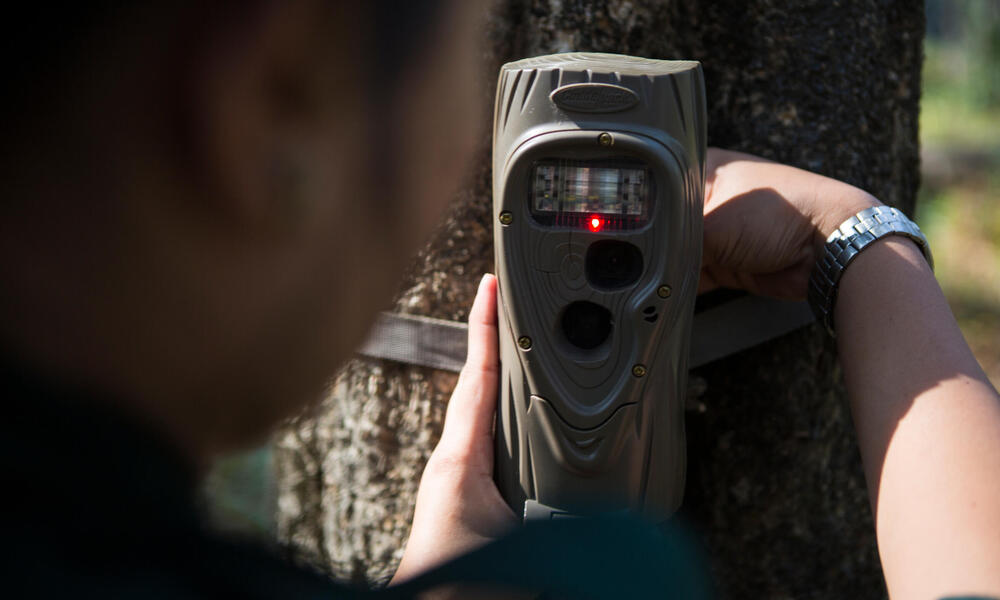“As a conservation ecologist, camera traps have completely changed the way we monitor and count wild animals, especially in dense tropical forests where you almost never see animals with your own eyes,” says WWF-US’s Arnaud Lyet, Senior Wildlife Conservation Scientist.
“Before camera traps, determining exactly how many rhinos or how many tigers were living in a specific park was one of the most difficult questions to answer. I’ve worked with our field team in Ujung Kulon National Park, in Java, Indonesia, for many years,” says Lyet “and I can probably count on one hand the number of ecologists who have seen a Javan rhino in the wild.”
Now, equipped with more than 100 camera traps continuously snapping pictures, almost every individual Javan rhino within the park has been photographed. WWF researchers know the precise size of the population.
“We know every individual, where they go when they give birth,” says Lyet.
Camera traps provide the strong evidence that ecologists need to assess the true status of populations, but with cameras running 24/7, collecting tens of thousands of images, it creates a backlog.
“I’ve seen firsthand how much valuable data remains unprocessed and unused.”
Wildlife Insights aims to significantly reduce the amount of time spent processing and identifying camera trap data, dramatically speeding up the pace at which this information can be processed and analyzed.
Using a Google-developed artificial intelligence-enabled software, the platform has been trained on over 600 different species and this number is growing as more photos are added. Through the automatic identification feature, thousands of images are classified in seconds, far faster than can be done with a trained eye.
